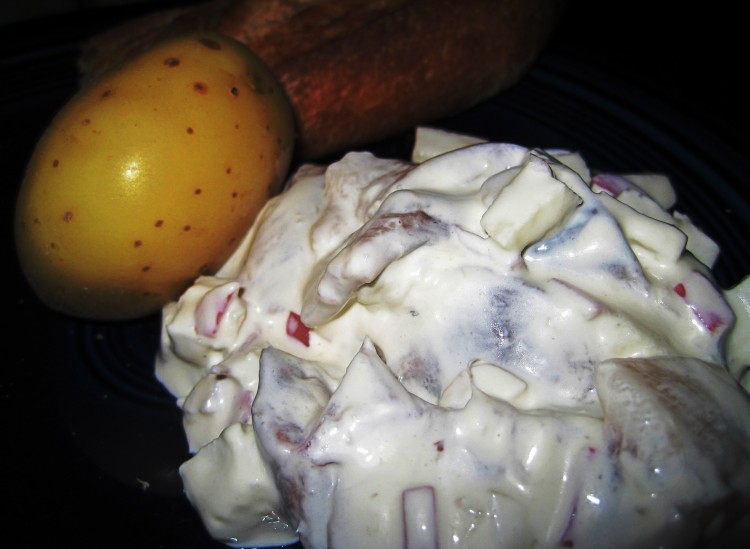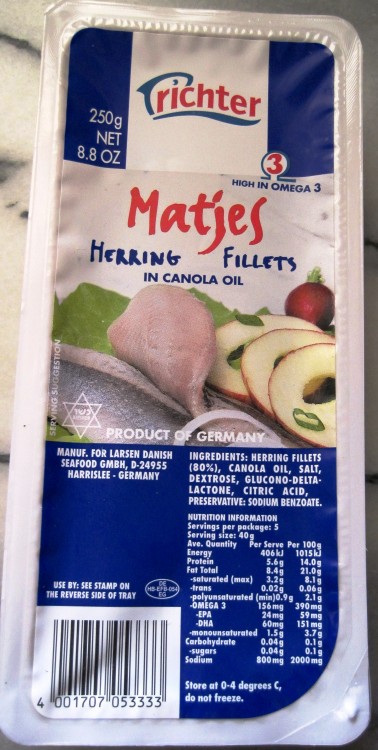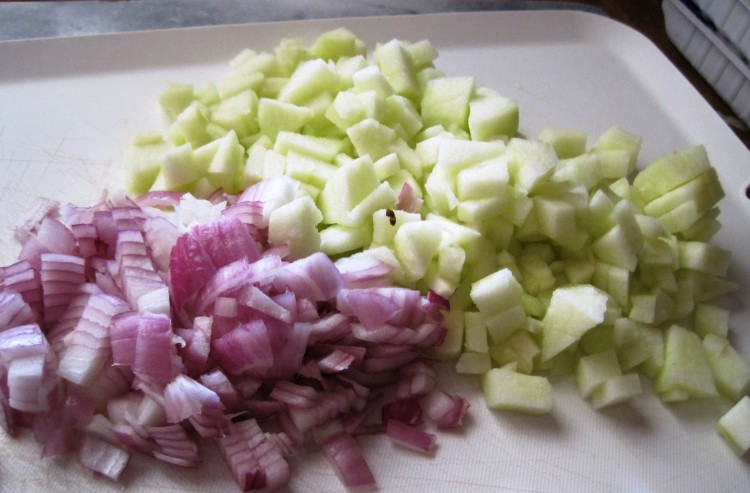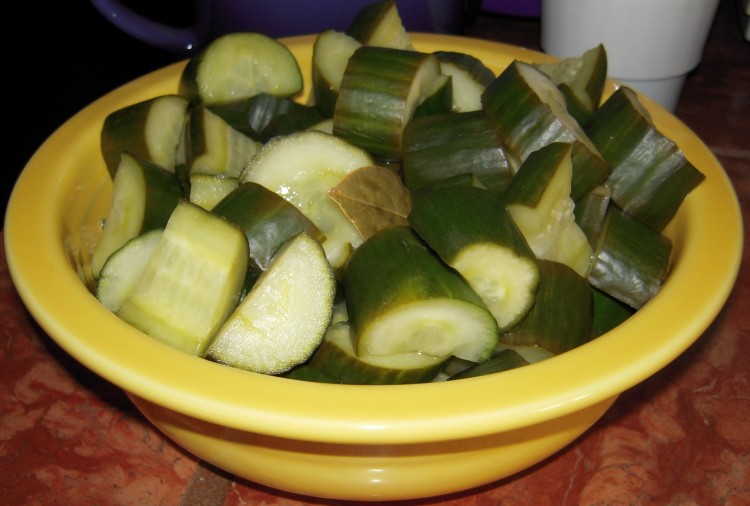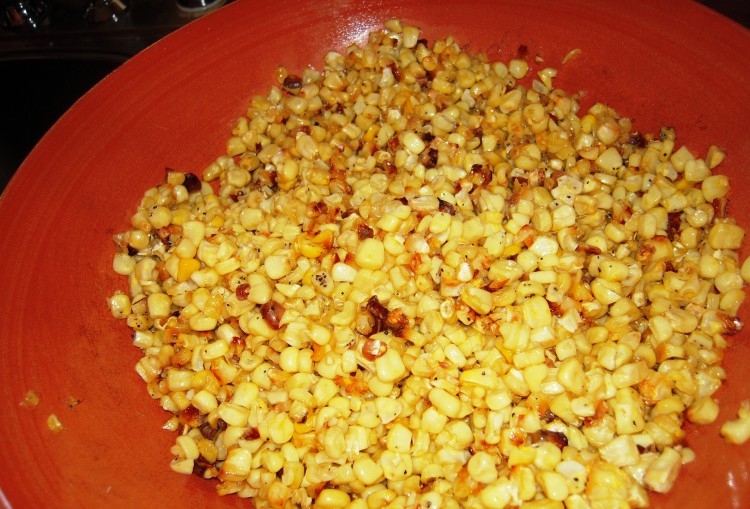
My husband, Steve, took a day off work recently, so we made an afternoon trip to Vik’s Chaat Corner in Berkeley. I’ve written about this place in the past, but not since they moved to their new, deluxe accommodations further down 4th street. 2390 4th street, to be exact.

Interior of Vik’s Chaat Corner in Berkeley
It’s still industrial-like, but larger, more open, light and modern. Long stainless steel tables and sturdy grade school chairs offer plenty of eating real estate for the crowds that show up to munch out on superior Indian snacks.

Cooking stations at Vik’s Chaat Corner in Berkeley
Chaat (think of it as Indian tapas) has become quite popular in the US over the past decade, and a number of chaat houses have cropped up in the Bay Area, but Vik’s was an early one and is still the best, in my opinion.

Steve at Vik’s Chaat Corner in Berkeley
This is my go-to place when I want something spicy. Or something without meat. Or when I’m alone, because it’s a great place to eat and read. It’s controlled mayhem at noon, so a meal comes complete with entertainment if you decide not to read.
Vik’s menu says that “chaat” means “to lick.” I believe it. I’ve been licking my chops here for years.
The weekend is the best time to visit, food-wise, because they offer their full menu – but I can’t deal with all the people. I forgo the chaat with animal protein for more comfort. The weekday chaat is completely vegetarian, unless they offer a weekend special. Often they have the keema samosa listed as such – but don’t count on it. I can tell, you, though, that the vegetarian chaat is wonderful, and if you must have fish, chicken or lamb, you can get one of three daily lunch plates that contain beast.
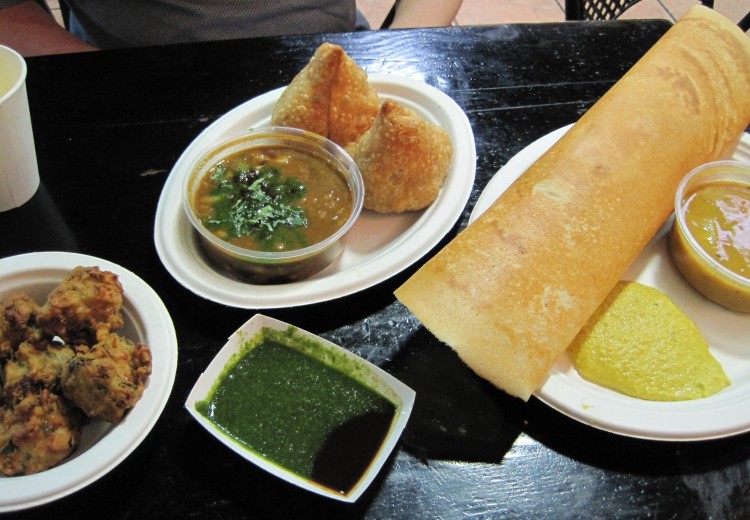
Chaat at Vik’s in Berkeley
If you’ve never been, go with a couple other people and order an assortment to share so you wind up with several breads to dip into various sauces and condiments. For example, most of the masala dosa potato stuffing is in the middle of this long crepe affair, so you can tear off plain pieces of the dosa on the ends and apply them to whatever looks good to you on other plates.
The average cost of an item at Vik’s is in the neighborhood of $6, so it’s a great place for a cheap meal, but one thing to be aware of is that almost everything has some heat. This would not be a good place to take people who cannot tolerate a slow, steady, pleasant burn. If in doubt, ask.
On this visit, Steve and I ordered:
Keema samosa. These pastry-wrapped “pies” are stuffed with minced lamb and peas and served with mint chutney. The samosa at Vik’s are always stand-out. No kidding. This includes the vegetarian (potato) version. You get two per order and they’re nice and fat – juicy and never greasy. Vik’s achieves real complexity in their dishes, and the deeply-flavored samosa fillings are a perfect example.
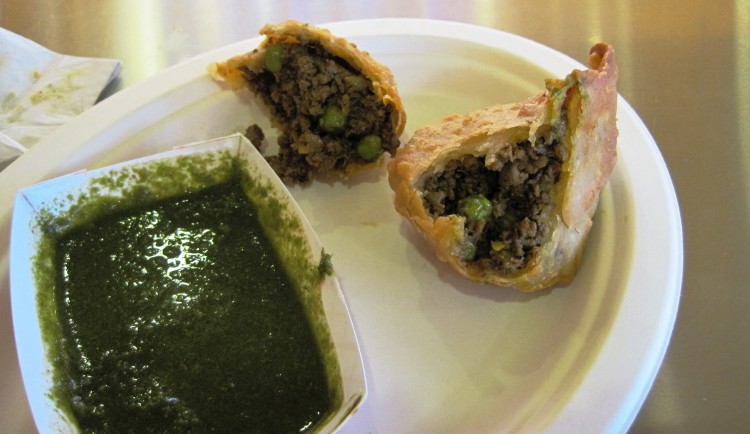
Keema samosa at Vik’s in Berkeley
Masala dosa. The dosa is a crepe made of ground rice and dal (lentils) and it’s stuffed with spiced potatoes. On the side there’s coconut chutney and sambar, a subtly-spicy warm lentil sauce. This dosa is large and hangs over the plate it’s served on. The potato stuffing in the masala dosa is different than the one in the samosa, so don’t have any qualms about ordering both items. I love the coconut chutney, which is cold and has a slightly sweet edge. It’s also nice to add an item that does not include the ubiquitous cholle (chick pea curry) on the side. The lentil sauce gives a little variety.
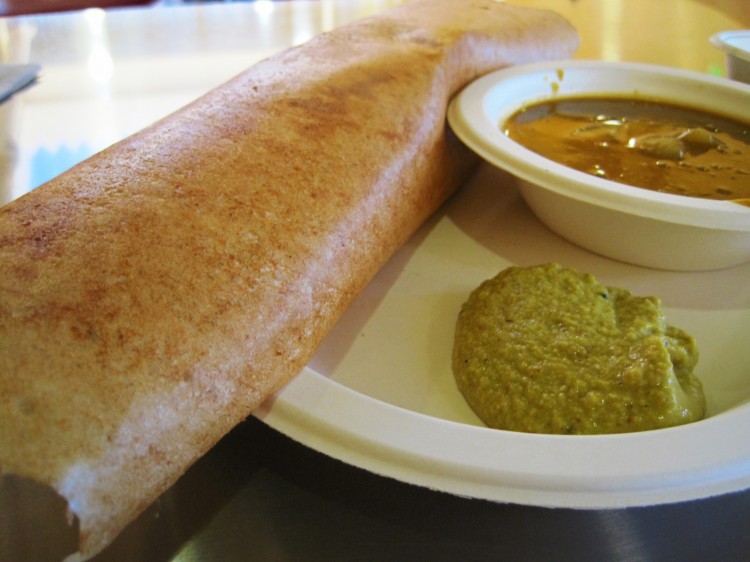
Masala dosa at Vik’s in Berkeley
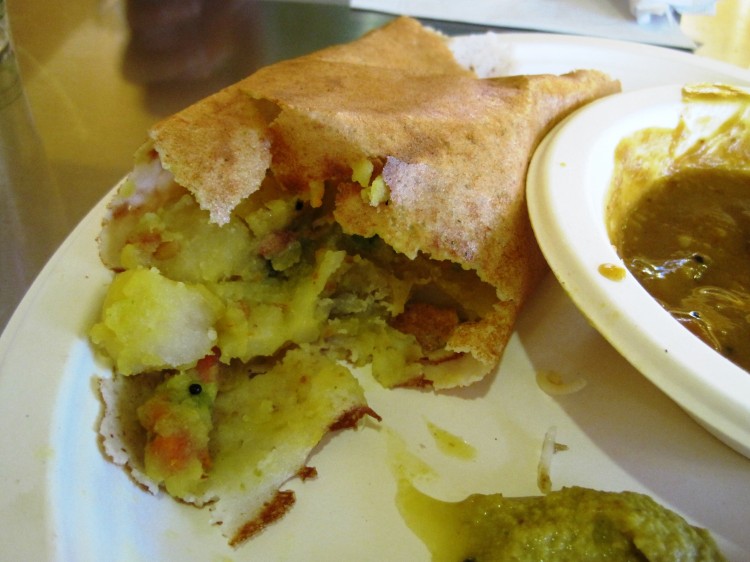
Potatoes inside the masala dosa at Vik’s in Berkeley
Bhatura cholle. This is a huge puri (puffed, fried bread made of fermented wheat) served with chick pea curry and Indian pickles, which are pungent and hot. The puri is the “bhatura” and the chick pea curry is the “cholle.” This is a dramatic and savory chaat item that is a must when I’m involved in a trip to Vik’s.
Lunch special B, which was chicken korma. Lunch specials come with a small serving of the main dish, roti (flat whole wheat bread), papadam (thin, brittle, chick pea flour bread), some kind of dal (lentil sauce), rice, raita (cold yogurt sauce) and pickle. Lunch specials work well when you share because one provides three dipping options for crepes or bread. Steve is a big fan of these plates, while I’m more interested in chaat, figuring I can get a chicken curry elsewhere.
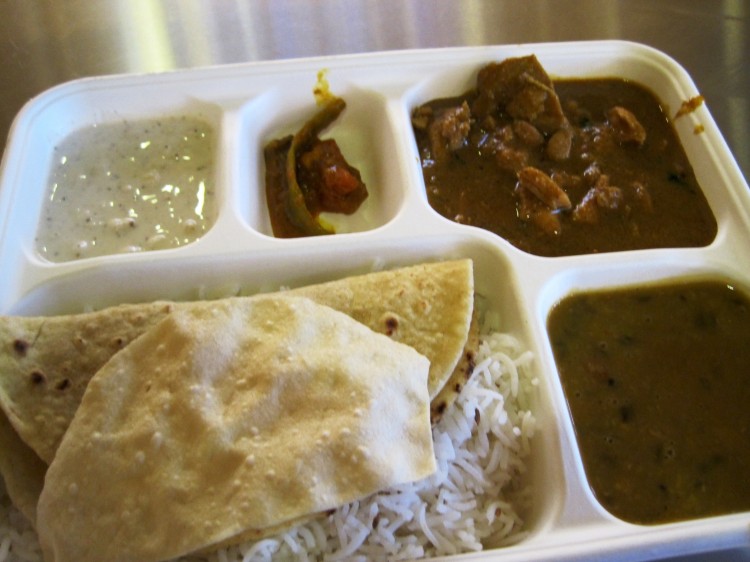
Lunch plate at Vik’s in Berkeley
If you go on the weekend, I suggest trying:
Kathi kabob. This is an egg-covered paratha wrap with boneless chicken chunks, onions and cilantro and comes with mint chutney. Paratha is a relatively thick, flaky, buttery whole wheat flat bread.
Lamb baida roti – a wrap made using roti and spiced ground lamb filling. The filling, which is also used in the keema samosa, is über-savory and addictive.
They have a couple of new items on the menu, but what I really liked seeing was salty lassi! I’m not a mango lassi kind of girl. Their version of salty lassi has herbs. Interesting. Never had lassi? How come? It’s a yogurt drink and serves as a foil for the hot food.

Salty lassi at Vik’s in Berkeley
It’s worth mentioning that Vik’s has a full sweets counter. If you like milky sweets, try a couple of the squares that look like solidified milk. They’ll be really sweet – like sweetened condensed milk – and may have pistachio or rosewater in there.
They carry my fave: rasmalai. These paneer (milk curd) dumplings in sweetened milk should be tried by all. The thing you might find odd is the texture. Unfamiliar textures seem to be a nonstarter for many people. Come on!
Steve and the parental unit love gulab jamun. The best way for me to describe these is to call them large donut holes saturated with, and swimming in, syrup.
They don’t have kheer (rice pudding), as far as I know, and if you order it in any restaurant I’ll come after you. It’s so easy and inexpensive to make at home there’s no reason to buy it. I’ll post my recipe soon. Milk, sugar, rice and a couple drops of rosewater. That’s all you need.
Now that I’ve covered the Chaat Corner, let me tell you about Vik’s Market, which you must walk through to get to the restaurant.
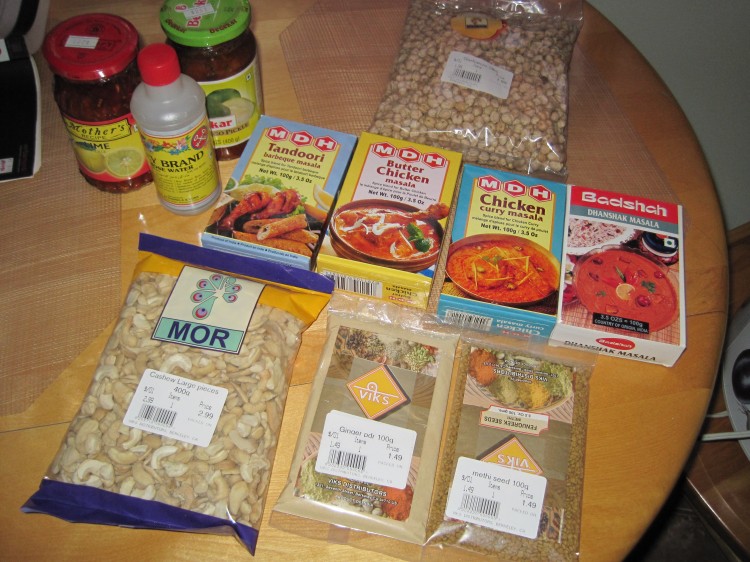
I spent about $25 on all the stuff in the photo.
What I bought:
-4 imported spice mixes that will season several meals each. Tandoori chicken, butter chicken, chicken masala, and dhanshak masala. 100 grams – AKA 3.5 ounces – apiece for about $1.50 per. None of those pretty, little, expensive, American-made packets for me. Check out my posts about this here and here.
-400 grams of cashews.
-Small bottle of rose water.
-Fenugreek leaves and seeds (methi).
-One jar of avakai mango pickle (little, pickled, raw mangos with chili and spices)
-One jar of lime pickle.
-Half-kilo of dried chick peas.
For Indian home cooking, a well-stocked Indian market is a must. Not only are the prices great, but they have everything you need and then some.
The next time you eat at Vik’s, check out all the aisles of the market just for fun. The imported pickle products alone are worth the price of admission. Even when you can find these at the supermarket, the prices are insane compared to Vik’s.


